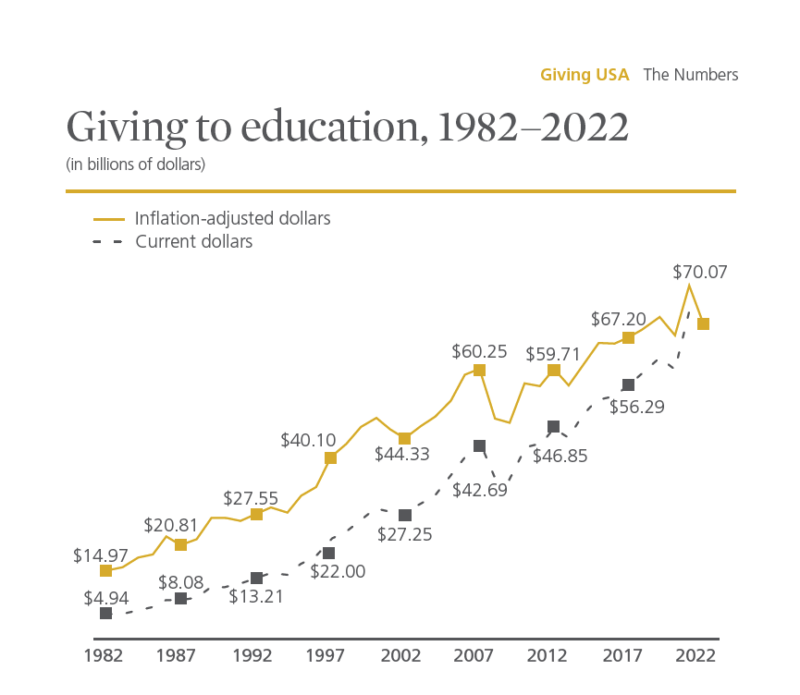
For healthcare institutions, philanthropy has long been a cornerstone in enhancing the patient experience and conducting breakthrough medical research. With ever-increasing operational costs, decreasing reimbursement, and the urgent need to modernize aging facilities, innovative fundraising strategies are even more critical to ensuring you have the resources to deliver the quality care that patients deserve.
One way the healthcare sector could enhance its fundraising potential is by emulating the strategies of higher education fundraising campaigns, particularly their adoption of the comprehensive campaign model.
Broadening the Scope: Capital Campaigns vs. Comprehensive Campaigns
Historically, healthcare nonprofits have relied heavily on the traditional capital campaign model of seeking gifts and pledges from donors “over and above” annual giving and in a compressed timeline of three to five years. While these campaigns—focused on raising funds for specific, large-scale goals such as new hospital buildings, advanced equipment, or targeted research projects—have been effective in meeting particular objectives, they often overlook the broader needs of contemporary healthcare institutions and exclude non-campaign donors from engagement, stewardship, and cultivation for a future gift.
Enter the comprehensive campaign model, a holistic approach to fundraising that encompasses all efforts within a specified and typically longer timeframe. This model includes recognition of annual funds, endowments, capital, events, planned gifts, and program support as part of the campaign total.
Comprehensive campaigns enable engagement with a wider range of donors and prospects, from major donors to individual contributors, thereby fostering a more resilient and robust donor base for future fundraising efforts. This inclusive approach also cultivates a philanthropic culture within the institution, allowing everyone to contribute to the campaign’s success.
Moreover, comprehensive campaigns align stakeholders around a shared vision that extends beyond the institution, connecting it to the community and the patients it serves. By showcasing the pivotal role of philanthropy in advancing disease prevention and patient care, such campaigns can inspire transformative levels of giving.
Comprehensive Campaigns: Higher Education’s Secret to Success
Higher education institutions have been pioneers in adopting comprehensive campaigns, achieving significant success in meeting their diverse needs—from infrastructure and research to scholarships and endowments. The evidence is compelling: between 1982 and 2022, the education sector has raised $1,279.1 billion in philanthropic contributions* (Giving USA 2023).
By contrast, the healthcare sector, which shares many similarities with higher education, has lagged in its fundraising efforts, raising $836.66 billion during the same 40-year period (Giving USA 2023).
 |
 |
A contributing factor in this disparity may largely be the healthcare sector’s delayed adoption of the comprehensive campaign model, which may have limited the scope of its fundraising efforts.
Embracing Comprehensive Campaigns: Key Considerations for Healthcare Nonprofits
The transition to comprehensive campaigns invites donors of all levels to contribute to a campaign’s success, irrespective of their gift size or designation. For hospitals and healthcare systems, this approach also allows for the integration of grateful patient programs into the campaign.
However, transitioning to a comprehensive campaign requires careful planning. Here are a few key considerations to keep in mind:
- Your Strategic Plan: Success largely depends on the strategic planning process of an institution. For instance, if an organization’s strategic plan highlights the need for specific projects such as an NCI-designated cancer center, the broader scope of comprehensive campaigns might need to be reevaluated to ensure alignment with these key strategic objectives.
- Gift Counting: The logistics of gift allocation, particularly with pledged but unrealized planned gifts, can be complex. A detailed plan for tracking and recording gifts is therefore essential.
- Messaging: With the numerous goals and projects under a comprehensive campaign, crafting a clear and compelling case for support for donors about the impact of their contributions becomes more challenging. However, this messaging is crucial for a successful campaign and creates a rallying point for supporters.
Expert consultation, such as from fundraising professionals at Graham-Pelton, can help navigate these complexities and set your institution on the path to philanthropic success. By adopting a more expansive perspective on fundraising, healthcare institutions can unlock substantial potential for increased revenue from a diversified donor base, operational enhancement, and, ultimately, enhanced patient care.
* Giving USA does not distinguish higher education from other educational nonprofit organizations in their total giving figures. However, they do cite that colleges and universities raised $59.9 billion in the academic fiscal year 2021-2022, according to the Council for Advancement and Support of Education. This would make contributions to higher education 85.5 percent of giving to education in 2022.


